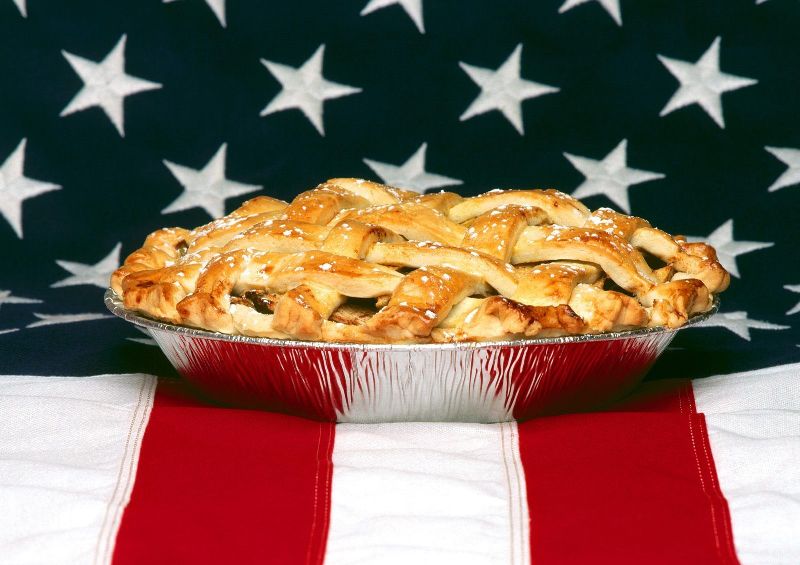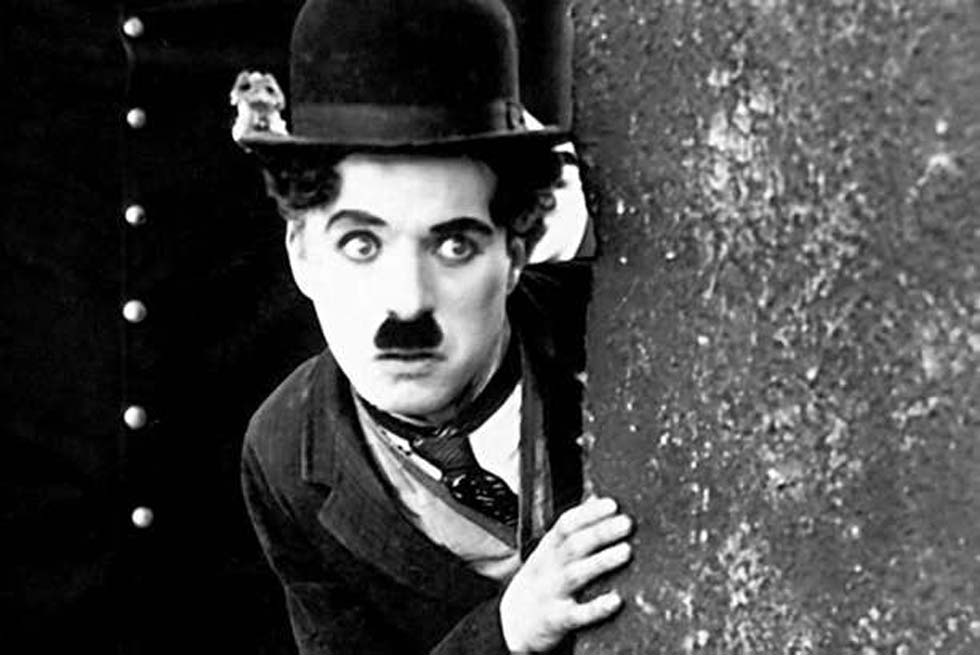14 Things You Didn’t Know About the Mona Lisa
Her tricky smile and timeless allure have inspired academic study and artistic emulation for more than five centuries. But the story of this perplexing portrait is even richer than it looks.
1. “MONA LISA” IS NOT HER NAME.
The painting’s subject is Lisa Gherardini, whose wealthy—and presumably adoring—husband Francesco Del Giocondo commissioned the work. This explains the less prevalent title for this painting, La Gioconda. The name Mona Lisa (or Monna Lisa, as the Italians prefer) roughly translates to “My Lady Lisa.”
2. NAPOLEON CRUSHED HARDON HER, THEN HER DESCENDANT .
The French emperor once had Mona Lisa hanging in his bedroom, where he’d presumably revel in her beauty for untold hours. It’s said his fascination with the painting inspired his affection for a pretty Italian named Teresa Guadagni, who was actually a descendant of Lisa Gherardini.
3. SHE’S SMALLER THAN YOU MIGHT THINK.
Mona Lisa’s influence in culture is massive, but the oil-on-wood panel painting measures just 30 by 21 inches and weighs 18 pounds.
4. HER EYEBROWS ARE A MATTER OF DEBATE.
Some claim the subject’s lack of eyebrows is representative of high-class fashion of the time. Others insist her AWOL eyebrows are proof that Mona Lisa is an unfinished masterpiece. But in 2007 ultra detailed digital scans of the painting revealed da Vinci had painted on eyebrows and bolder eyelashes. Both had simply faded over time or had fallen victim to years of restoration work.
5. SHE’S BROKEN A LOT OF HEARTS.
The portrait was first put on public display in the Louvre in 1815, inspiring admiration, as a string of “suitors bearingflowers, poems and impassioned notes climbed the grand staircase of the Louvre to gaze into her ‘limpid and burning eyes.’”
“Mona Lisa often made men do strange things,” R. A. Scotti wrote in Vanished Smile, “There were more than one million artworks in the Louvre collection; she alone received her own mail.” The painting actually has its own mailbox at the Louvre because of all the love letters its subject receives.
6. MEN HAVE DIED FROM LOVING HER.
In 1852, an artist named Luc Maspero threw himself from the fourth floor of a Parisian hotel, leaving a suicide note that read: “For years I have grappled desperately with her smile. I prefer to die.” Then in 1910, one enamoured fan came before her solely to shoot himself as he looked upon her.
7. IT’S LITERALLY PRICELESS.
In the 1960s, the painting went on a tour where it was given an insurance valuation of $100 million. But the policy was never taken out because the premiums were more than the cost of the best security.
8. THE PAINTING SITS IN THE WORLD’S PRETTIEST PRISON.
Mona Lisa gets her own room at the Louvre, one that is climate controlled to keep her in the ideal environment. Additionally, the work is encased in bulletproof glass to prevent threat and injury.
9. SHE’S BEEN ATTACKED!
If you look closely at the subject’s left elbow, you might notice the damage done by Ugo Ungaza Villegas, a Bolivian who chucked a rock at the portrait in 1956. A few months before, another art attacker pitched acid at the painting, which hit the lower section. These attacks inspired the bulletproof glass, which in 2009 successfully rebuffed a souvenir mug hurled by an enraged Russian tourist who’d been denied French citizenship.
10. FRANCE MOURNED EN MASSE WHEN SHE WENT MISSING.
In 1911, Mona Lisa was stolen from the Louvre. The New York Times retroactively compared the public display of grief to that seen in the wake of Princess Diana’s death in 1997. Thousands poured into the Louvre to stare in shock at the blank wall where she once hung and leave flowers, notes, and other remembrances.
11. PABLO PICASSO WAS A SUSPECT IN THE CAPER.
Because he’d been caught buying stolen Louvre pieces before, Picasso was brought in for questioning. But the true thief would not be caught until 1913.
Louvre employee Vincenzo Perugia was a proud Italian nationalist who smuggled the painting out under his smock because he felt it belonged to his and da Vinci’s homeland, not France. After hiding it for two years, Perugia was busted trying to sell Mona Lisa to a Florence art dealer. However, he did briefly get his wish. Upon her recovery, Mona Lisa toured Italy before returning to Paris.
12. SUSPICIONS AROSE THAT THE HEIST WASN’T A ONE-MAN JOB.
Though Perugia was the only one prosecuted for the crime, it’s unlikely he acted alone. At the time of the theft, Mona Lisa was encased in a heavy wood backing and glass case that would have weighed almost 200 pounds, making it highly unlikely Perugia could have pulled her down from the wall on his own.
Years later, a man who called himself Marquis of the Vale of Hell confessed to American reporter Karl Decker that he was the true mastermind behind the theft of Mona Lisa. On the condition his story be kept secret until his death, he revealed Perugia was one of three men paid handsomely to snatch her. This way, the Marquis could sell multiple forgeries of the masterpiece to collectors for exorbitant sums. The beauty of the scam was that each buyer would believe they owned the authentic missing Mona Lisa. Whether the Marquis was telling the truth or not is still a hotly debated topic around the theft.
13. HER RETURN INSPIRED A FASHION TREND.
In her book Mona Lisa: A Life Discovered, journalist Dianne Hales writes, “Society women adopted the ‘La Joconde look’ [named for the painting’s French title], dusting yellow powder on their faces and necks to suggest her golden complexion and immobilizing their facial muscles to mimic her smile. In Parisian cabarets, dancers dressed as La Joconde performed a saucy can-can…. Something beyond the painting’s wild popularity had changed. The Mona Lisa had left the Louvre a work of art; she returned as a public property, the first mass art icon.”
14. HER SMILE DOESN’T CHANGE, BUT YOUR MINDSET DOES.
That is-she-or-isn’t-she smile has long fascinated artists and historians. But in 2000, Harvard neuroscientist Dr. Margaret Livingstone applied a scientific method to why Mona Lisa’s smile seems to shift. It’s all about where your focus is, and how your brain responds.
Ismételjünk át néhány információt a képről! Válaszolj a kérdésekre magyarul!
1. Ki adott megbízást a Mona Lisa elkészítésére?
2. Mit tett Napóleon a festménnyel?
3. Milyen anyagra festették?
4. Mi történt a szemöldökével?
5. Miben egyedülálló a Louvre műalkotásai között?
6. Miért „életveszélyes”?
7. Miért nem kötöttek rá biztosítást a hatvanas években?
8. Hogyan védik jelenleg?
9. Milyen támadást sikerült ezzel meghiúsítani?
10. Milyen reakciót váltott ki az emberekből az eltűnése?
11. Milyen motívumai voltak a tolvajnak?
12. Mi nehezítette meg az elkövetést?
13. Milyen divatot indított el a festmény visszatérése?
14. Mit vizsgáltak tudományosan vele kapcsolatban?
Válaszok:
1. A képen látható hölgy férje.
2. A hálószobájában tartotta és órákon át nézte.
3. Fára
4. Elhalványult az idők és a restaurációk során.
5. Egyedül neki van külön postaládája.
6. Mert többen is öngyilkosok lettek szerelmi bánatukban miatta.
7. Mert drágább lett volna, mint a legszigorúbb biztonsági intézkedések.
8. Golyóálló üveg mögött tartják.
9. Egy bögrét vágott hozzá egy turista.
10. Gyászolták – az üres helyéhez virágokat, gyászfeliratokat, emléktárgyakat vittek.
11. Olaszországba akarta vinni, mert úgy érezte, hogy ott a helye.
12. Az, hogy a festménynek nehéz fa hátlapja és üveg tokja volt.
13. A nők sárga port szórtak az arcukra és a nyakukra, hogy az arcszínét utánozzák és a mosolyát is próbálták utánozni.
14. Azt, hogy miért tűnik úgy, mintha a mosolya változna.
Vocabulary
tricky | talányos |
timeless allure | idővel nem múló báj, szépség, vonzerő |
artistic | művészi |
emulation | követés, utánzás |
perplexing | zavarba hozó |
wealthy | gazdag, tehetős |
presumably | feltehetően |
adoring | rajongásig szerető |
to commission | megrendelni |
prevalent | elterjedt, gyakori |
to have a crush on somebody | beleszeretni, belezúgni valakibe |
descendant | leszármazott, utód |
emperor | császár |
to revel in something | kedvét leli, gyönyörködik valamiben |
for untold hours | számtalan órán át, „a végtelenségig” |
panel painting | táblakép |
eyebrow | szemöldök |
matter of debate | vita tárgya |
lack of something | valami hiánya |
representative | képviselő |
AWOL (Absent Without Leave) | hiányzó (eredeti jelentése: engedély nélkül távol levő) |
unfinished masterpiece | befejezetlen remekmű |
to reveal | megmutatni, felfedni |
eyelashes | szempilla |
to fall victim to something | áldozatul esni valaminek |
onpublic display | a nagyközönség által megtekinthető |
suitor | udvarló |
limpid | tiszta, áttetsző |
suicide | öngyilkosság |
suicide note | búcsúlevél |
to grapple with something | viaskodni, küzdeni valamivel |
enamoured | szerelmes |
premium | biztosítási díj |
to be encased | bezárva valamibe |
bulletproof glass | golyóálló üveg |
threat | fenyegetés |
injury | sérülés |
elbow | könyök |
to chuck | dobni |
to pitch | dobni, hajítani |
acid | sav |
to rebuff | visszafog, megakadályoz |
mug | bögre |
to hurl | hajítani |
enraged | feldühödött |
to deny citizenship | megtagadni az állampolgárságot valakitől |
to mourn | gyászolni |
en masse | együttesen, egy emberként |
in the wake of something | valaminek a nyomában |
blank | üres |
suspect | gyanúsított |
caper | ostoba tréfa |
to smuggle | csempészni |
smock | köpeny |
to be busted | lelepleződni |
Florence | Firenze |
heist | bűntett |
to confess to | vallomást tenni |
mastermind | értelmi szerző, háttérből irányító |
to pay handsomely | bőkezűen fizetni |
to snatch | elrabolni |
forgery | hamisítvány |
exorbitant sums | hatalmas összegek |
complexion | arc |
to immobilize | nem mozgatni |
facial muscles | arcizmok |
mass | tömeg |
mindset | szellemi beállítottság, hozzáállás |







